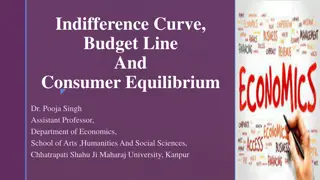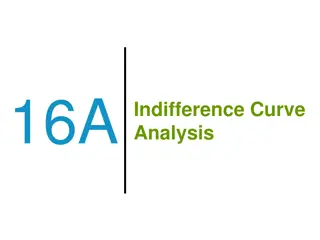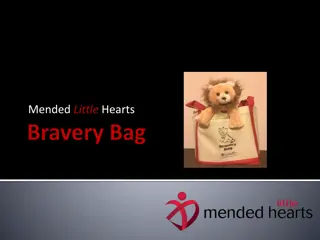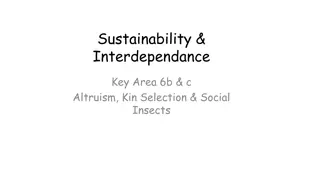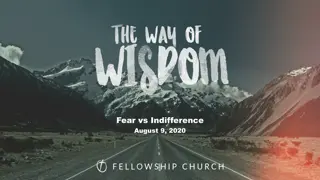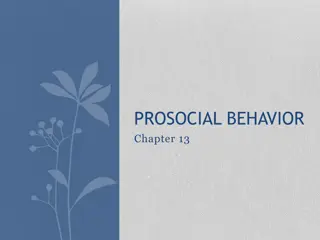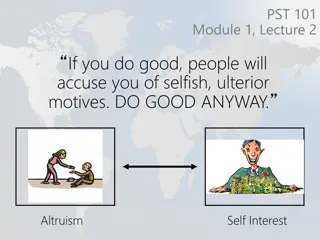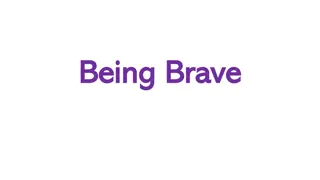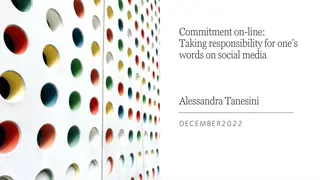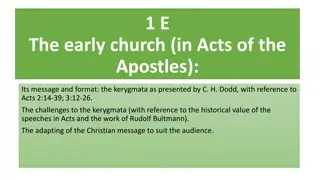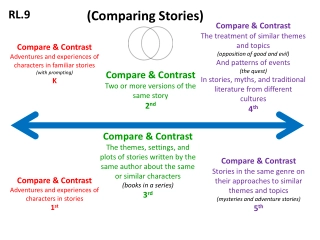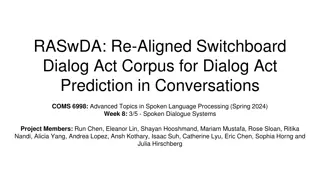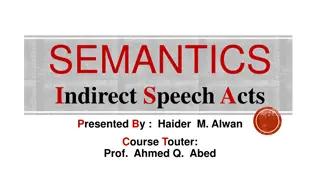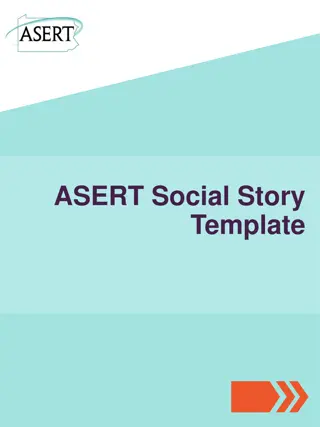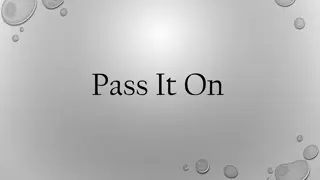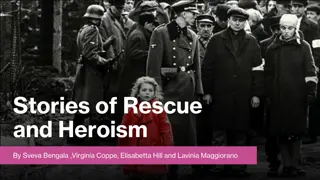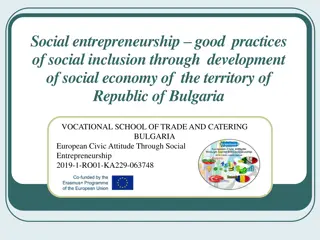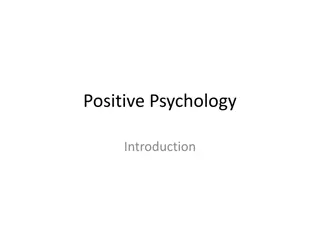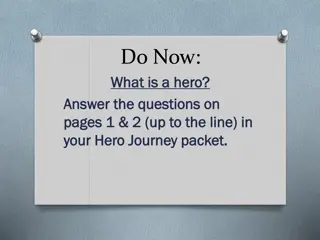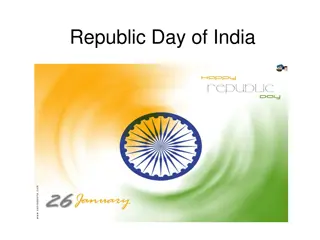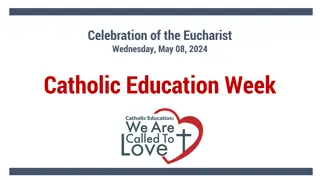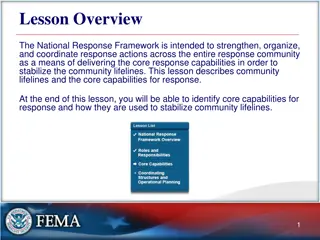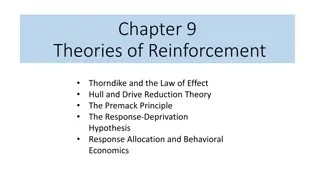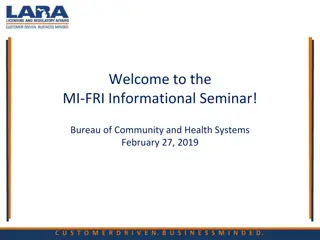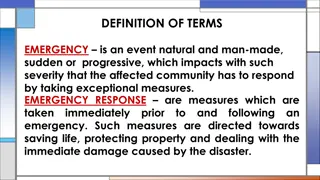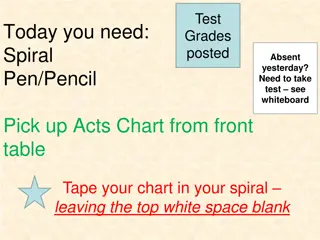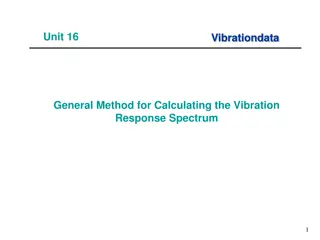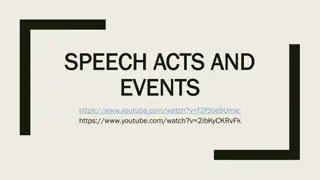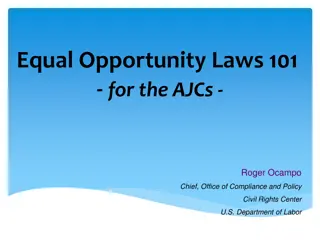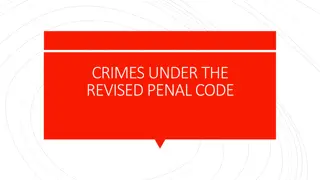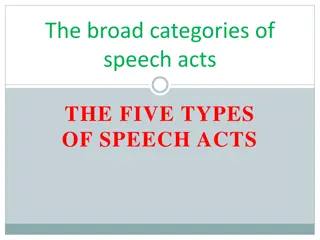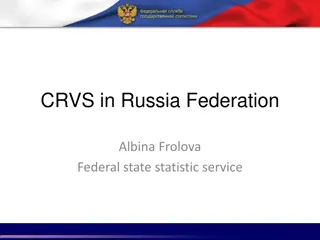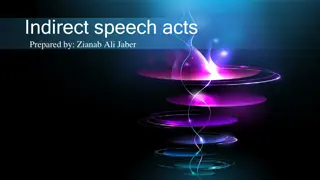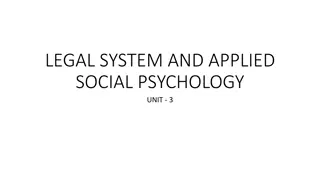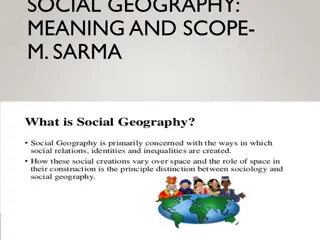Acts of Altruism & Social Response: Stories of Bravery and Indifference
In the midst of crisis, individuals like Carl Wilkens and Paul Rusesabagina displayed remarkable altruism by risking their lives to save others during the Rwandan genocide. On the other hand, the tragic case of Kitty Genovese highlights the bystander effect and the consequences of social apathy. Understanding altruism, social exchange theory, and norms can shed light on these contrasting behaviors in times of conflict and peace.
Download Presentation

Please find below an Image/Link to download the presentation.
The content on the website is provided AS IS for your information and personal use only. It may not be sold, licensed, or shared on other websites without obtaining consent from the author. Download presentation by click this link. If you encounter any issues during the download, it is possible that the publisher has removed the file from their server.
E N D
Presentation Transcript
Learning Targets 80-1 Define altruism, and describe when people are most and least likely to help. 80-2 Discuss how social exchange theory and social norms explain helping behavior. 80-3 Explain how social traps and mirror-image perceptions fuel social conflict. 80-4 Discuss how we can promote peace. Module 80 Altruism, Conflict and Peacemaking
Consider Carl Wilkens Carl Wilkens, a Seventh-day Adventist missionary, was living in Kigali, Rwanda in 1994 with his family when militia from the Hutu ethnic group began to slaughter members of a minority ethnic group, the Tutsis. The U.S. government, church leaders, and friends all implored Wilkens to leave. He refused. After evacuating his family, and after every other American had left Kigali, he alone stayed and contested the 800,000-person genocide.
What happened? When the militia came to kill Wilkens and his Tutsi servants, Wilkens Hutu neighbors deterred them. Despite repeated death threats, he spent his days running roadblocks to take food and water to orphanages and to negotiate, plead, and bully his way through the bloodshed, saving lives time and again. It just seemed the right thing to do, he later Explained. (Kristof, 2004)
Consider Paul Rusesabagina Elsewhere in Kigali, Paul Rusesabagina, a Hutu married to a Tutsi and the acting manager of a luxury hotel, was sheltering more than 1200 terrified Tutsis and moderate Hutus. When international peacekeepers abandoned the city and hostile militia threatened his guests in the Hotel Rwanda (as it came to be called in a 2004 movie), the courageous Rusesabagina began cashing in past favors.
What is altruism? Rusesabagina bribed the militia and telephoned influential people abroad to exert pressure on local authorities, thereby sparing the lives of the hotel s occupants, despite the surrounding chaos. Both Wilkens and Rusesabagina were displaying altruism, an unselfish regard for the welfare of others.
Who was Kitty Genovese? On March 13, 1964, a stalker repeatedly stabbed Kitty Genovese, then raped her as she lay dying outside her Queens, New York, apartment at 3:30 a.m. Oh, my God, he stabbed me! Genovese screamed into the early morning stillness. Please help me! Windows opened and lights went on as some neighbors heard her screams. Her attacker fled and then returned to stab and rape her again. Until it was too late, no one called police or came to her aid. Initial reports would indicate approximately thirty-eight people had heard Kitty Genovese s screams and had done nothing about it.
How did Kitty Genoveses story lead to research on bystander involvement? Although initial reports of the Genovese murder overestimated the number of witnesses, the reports triggered outrage over the bystanders apparent apathy and indifference. Rather than blaming the onlookers, social psychologists John Darley and Bibb Latan attributed their inaction to an important situational factor the presence of others.
What is the decision-making process for bystander intervention? Before helping, one must first notice an emergency, then correctly interpret it, and then feel responsible. (Adapted from Darley & Latan , 1968b.)
passing by bypassing To paraphrase the French writer Voltaire, we all are guilty of the good we did not do.
What research has been conducted on bystander intervention? One of Darley and Latan s experiments staged a fake emergency as students in separate laboratory rooms took turns talking over an intercom. Only the person whose microphone was switched on could be heard. When his turn came, one student (an accomplice of the experimenters) pretended to have an epileptic seizure, and he called for help. (Darley & Latan , 1968a)
analyzing data What were the results of Darley and Latan s experiment as shown in the graph above?
What were the results? Those who believed only they could hear the victim and therefore thought they alone were responsible for helping him usually went to his aid. Students who thought others could also hear the victim s cries were more likely to do nothing.
thinking critically Why do you think the number of people available to help impacted the helping behavior of others? Have you ever been in a similar situation? Talk about it.
1. What Would You Answer? Putting himself in danger, Nish stood up to the bullies who were beating up Neel in a display of A. assuming responsibility. B. mirror-image perceptions. C. altruism. D. the bystander effect. E. diffusion of responsibility.
What is diffusion of responsibility? In the case of Darley and Latan s experiments, when more people shared responsibility for helping when there was a diffusion of responsibility any single listener was less likely to help. Social psychologists use the term diffusion of responsibility to describe the behavior in which an individual assumes they are not responsible for taking action or that others have already done so.
What is the bystander effect? the tendency for any nearby person (bystander) to be less likely to give aid if other bystanders are present The presence of bystanders reduces brain activation in the motor cortex, signaling that we don t need to take action. (Hortenhuis & de Gelder, 2014)
What experiments have confirmed the bystander effect? In one study, researchers and their assistants took 1497 elevator rides in three cities and accidentally dropped coins or pencils in front of 4813 fellow passengers. (Latan & Dabbs, 1975) When alone with the person in need, 40% helped; in the presence of 5 other bystanders, only 20% helped.
What is the social-exchange theory? the theory that our social behavior is an exchange process, the aim of which is to maximize benefits and minimize costs One widely held view is that self-interest underlies all human interactions and that our constant goal is to maximize rewards and minimize costs. Accountants call it cost-benefit analysis. Philosophers call it utilitarianism. Social psychologists call it social exchange theory.
For example If you are considering donating blood, you may weigh the costs of doing so (time, discomfort, anxiety) against the benefits (reduced guilt, social approval, good feelings). If the rewards exceed the costs, you will help.
What is the reciprocity norm? an expectation that people will help, not hurt, those who have helped them In our relations with others of similar status, this norm compels us to give (in favors, gifts, or social invitations) about as much as we receive. Sometimes this means paying it forward, as happened in one experiment, when people who were treated generously became more likely to be generous to a stranger. (Tsvetkova & Macy, 2014)
What is the social-responsibility norm? The social-responsibility norm is the expectation that we should help those who need our help young children and others who cannot give as much as they receive even if the costs outweigh the benefits. One study showed that Europeans are most welcoming of asylum seekers who are most vulnerable those, for example, who have been tortured or have no surviving family. (Bansak et al., 2016)
Consider Wesley Autrey Construction worker Wesley Autrey exemplified the social-responsibility norm on January 2, 2007. He and his 6- and 4-year-old daughters were awaiting a New York City subway train when, before them, a man collapsed in a seizure, got up, then stumbled to the platform s edge and fell onto the tracks. With train headlights approaching I had to make a split-second decision, Autrey later recalled. (Buckley, 2007)
What did Autrey do? Autrey s decision, as his girls looked on in horror, was to leap from the platform, push the man off the tracks and into a foot-deep space between them, and lay atop him.
the subway hero As the train screeched to a halt, five cars traveled just above his head, leaving grease on his knit cap. When Autrey cried out, I ve got two daughters up there. Let them know their father is okay, onlookers erupted into applause.
What is a conflict? a perceived incompatibility of actions, goals, or ideas To a social psychologist, the elements of conflict are much the same, whether partners sparring, political groups feuding, or nations at war. In each situation, conflict may seed positive change, or be a destructive process that can produce unwanted results.
What is a social trap? a situation in which the conflicting parties, by each pursuing their self-interest rather than the good of the group, become caught in mutually destructive behavior For instance, it may be in Company A s best financial interest to dump their toxic waste into the nearby river because it is cheaper than hauling it to a proper collection location. But if Company B, C, D, and so on all do the same, all act in their own individual best interests, the destruction of the river habitat and is guaranteed.
What are real-life examples of social traps? Many real-life situations similarly pit our individual interests against our communal well-being. Individual fish trawlers reasoned that the fish they took would not threaten the species and that if they didn t take them, others would anyway. The result: Some fish stocks have been depleted. Ditto for the buffalo hunters of yesterday and the elephant-tusk poachers of today.
What is another example of a social trap? Individual car owners and home owners reason, electric cars are more expensive. Besides, the fuel that I burn in my one car doesn t noticeably add to the greenhouse gases. When enough people reason similarly, the collective result threatens disaster climate change, rising seas, and more extreme weather. Social traps challenge us to reconcile our right to pursue our personal well-being with our responsibility for the well-being of all.
2. What Would You Answer? A situation in which the conflicting parties, by rationally pursuing their self-interest, become caught in mutually destructive behavior is known as a A. social trap. B. conflict. C. bystander effect. D. diffusion of responsibility. E. social-responsibility norm.
What are mirror-image perceptions? mutual views often held by conflicting people, as when each side sees itself as ethical and peaceful and views the other side as evil and aggressive As we see them as untrustworthy, with evil intentions so they see us. Each demonizes the other. My political party has benevolent motives; the other party is malevolent. (Waytz et al., 2014)
What is a self-fulfilling prophecy? a belief that leads to its own fulfillment Mirror-image perceptions can often feed a vicious cycle of hostility. If Juan believes Maria is annoyed with him, he may snub her, causing her to act in ways that justify his perception. Perceptions can become self-fulfilling prophecies beliefs that confirm themselves by influencing the other person to react in ways that seem to justify them.
How can we make peace? contact cooperation communication conciliation
Does it help to put two conflicting parties into contact with each other? With cross-racial contact, South Africans interracial attitudes have moved into closer alignment. (Dixon et al., 2007; Finchilescu & Tredoux, 2010; Swart et al., 2011) Friendly contact, say between Blacks and Whites as roommates, improves attitudes toward others of the different race, and even toward other racial groups. (Gaither & Sommers, 2013; Tausch et al., 2010) In surveys, the reason people most often give for becoming more supportive of same-sex marriage is having friends, family, or acquaintances who are gay or lesbian. (Pew, 2013b)
Consider the research of Muzafer Sherif A 1966 study to see if enemies could overcome their differences, set a conflict in motion. In the classic Robber s Cave study, researcher Muzafer Sherif separated 22 Oklahoma City boys into two separate camp areas. Then he had the two groups compete for prizes in a series of activities. Before long, each group became intensely proud of itself and hostile to the other group s sneaky, smart-alecky stinkers.
What happened next? Food wars broke out. Cabins were ransacked. Fistfights had to be broken up by camp counselors. Brought together, the two groups avoided each other, except to taunt and threaten. Little did they know that within a few days, they would be friends.
How do superordinate goals impact cooperation? Then Sherif arranged for the camp water supply to fail, and all 22 boys had to work together to restore the water. To rent a movie they all had to pool their resources. To move a stalled truck, the boys needed to combine their strength, pulling and pushing together Sherif accomplished this by giving the two teams of boys superordinate goals shared goals that could be achieved only through cooperation.
What can we learn from Sherifs research? Having used isolation and competition to make strangers into enemies, Sherif used shared predicaments and goals to turn enemies into friends. What reduced conflict was not mere contact, but cooperative contact.
interpret the quote Me against my brother, my brothers and me against my cousins, then my cousins and me against strangers. ~Bedouin proverb How does the quote above relate to the research on conflict and cooperation?
How important is communication to peace? When real-life conflicts become intense, a third-party mediator a marriage counselor, labor mediator, diplomat, community volunteer may facilitate much- needed communication. (Rubin et al., 1994) Mediators help each party voice its viewpoint and understand the other s needs and goals.
What is GRIT? Graduated and Reciprocated Initiatives in Tension (GRIT) Reduction a strategy designed to decrease international tensions Social psychologist Charles Osgood advocated a strategy of Graduated and Reciprocated Initiatives in Tension-Reduction, nicknamed GRIT. In applying GRIT, one side first announces its recognition of mutual interests and its intent to reduce tensions. It then initiates one or more small, conciliatory acts.
What happens next? Without weakening one s retaliatory capability, this modest beginning opens the door for reciprocity by the other party. Should the enemy respond with hostility, one reciprocates in kind. But so, too, with any conciliatory response.
apply your learning Do you regret not getting along with some friend or family member? How might you resolve the conflict using concepts you have just learned? Talk about it in class.
Learning Target 80-1 Review Define altruism, and describe when people are most and least likely to help. Altruismis unselfish regard for the well-being of others. We are most likely to help when we (a) notice an incident, (b) interpret it as an emergency, and (c) assume responsibility for helping. Other factors, including our mood and our similarity to the victim, also affect our willingness to help. We are least likely to help if other bystanders are present (the bystander effect).
Learning Target 80-2 Review Discuss how social exchange theory and social norms explain helping behavior. Social exchange theory is the view that we help others because it is in our own self-interest; in this view, the goal of social behavior is maximizing personal benefits and minimizing costs. Others believe that helping results from socialization, in which we are taught guidelines for expected behaviors in social situations, such as the reciprocity norm and the social-responsibility norm.
Learning Target 80-3 Review Explain how social traps and mirror- image perceptions fuel social conflict. A conflictis a perceived incompatibility of actions, goals, or ideas. Socialtrapsare situations in which people in conflict pursue their own individual self-interest, harming the collective well-being. Individuals and cultures in conflict also tend to form mirror-image perceptions: Each party views the opponent as untrustworthy and evil-intentioned, and itself as an ethical, peaceful victim. Perceptions can become self-fulfilling prophecies.
Learning Target 80-4 Review Discuss how we can promote peace. Peace can result when individuals or groups work together to achieve superordinate(shared) goals. Research indicates that four processes contact, cooperation, communication, and conciliation help promote peace.


